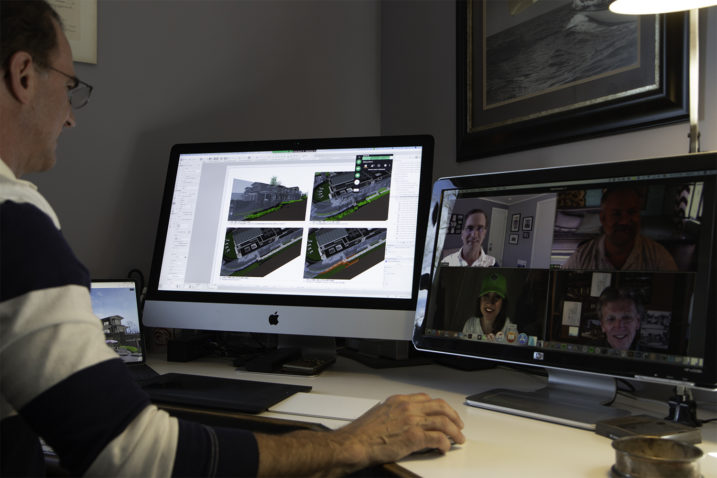Recent Posts
Archives
- July 2024 (1)
- February 2024 (3)
- January 2024 (3)
- December 2023 (1)
- September 2023 (1)
- August 2023 (1)
- January 2023 (3)
- October 2022 (1)
- June 2022 (3)
- December 2021 (1)
- November 2020 (3)
- May 2020 (3)
- February 2020 (1)
- January 2020 (2)
- February 2019 (1)
- May 2018 (3)
- April 2011 (1)
Collaboration at a distance

Since its inception, AOME Architects has employed the power of collaboration. But if we had focused only on the collaboration among our peers in the office we would have neglected the incredible power that partnering with contractors, subcontractors, vendors and craftspeople contributes to the success of our projects.
We self-consciously use our methods of communication and management to leverage those of our outside collaborators—who find that our approach encourages and allows them to perform better than they do with other architects.

As we more deeply explored these ideas over the years an unexpected discovery gradually presented itself — as you learn to collaborate more deeply with outside partners it turns out you are simultaneously teaching yourself to work remotely.
As we developed the skills to foster improved communication with the myriad outside collaborators we were learning how to work with digital resources in key ways that ultimately led us to our current business model: The “Distributed Virtual Office.” It began with merely wishing to share digital files with our partners, which internally led to the capacity to occasionally work from home.
But this was a static process that detached the colleague at home from the collaborative processes in the office that usually took place in the form of a spontaneous small conference (critique) huddled around a colleague’s computer screen. While they navigated you would point and gesture and request that they switch views and zoom in and out for context. At the time we thought it worked well enough.

This form of “screen” collaboration was modeled upon our old studio days in school when fellow students would casually observe the drawings laid out on your drawing board and stop to comment and query. For its time, this worked well — on modern computer screens not so much. On the monitor we lack the context of the whole drawing (to see details we spend much of our time zoomed way in). When a colleague points to something on the screen, you are unintentionally directed to something else because their angle of view to the screen is so much different than yours.
But when we first began to entertain the notion of taking the office “virtual,” the whole office was apprehensive about the damage working remotely would do to our reliance on such spontaneous collaborations.
In 2011 AOME Architects made the bold (economic) decision to reinvent how we design and manage all our projects—rather than sinking resources in office space (and time in commuting) we equipped everyone in the office with a state–of–the– art work station centered around ArchiCAD, the premier architectural CAD software from Graphisoft. We did so expecting to take a hit in our collaborative process that we were determined to somehow rescue.

How wrong we were! It turned out that collaborating on screen was much more efficient and rewarding that we ever had imagined. In the modern office critique we now experience, each party has control of the mouse and zooming of the model and can, when needed, control the mouse and screen of their colleague. It is so much faster and richer than the old method crowded around a desk. Plus with proper discipline, the distractions of the common office space can be suppressed to allow one to focus when needed in ways that were not possible for most people in a brick and mortar open plan office set up to promote — collaboration!
AOME Architects is happy to report that with these new found modern tools and methods combined with our new ways to collaborate, our efficiency in producing design and documentation increased to an extent that it takes half as many people as it did in 2008 when we made began our evolution to this new model of operation.